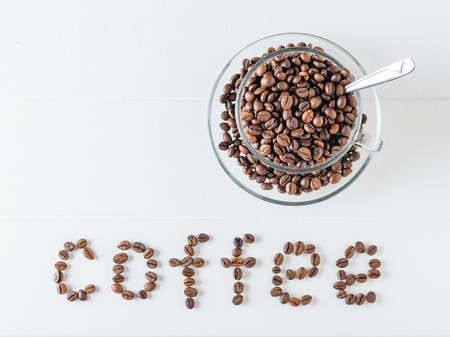1. Understanding Coffee Roasting Levels
When it comes to coffee, the roast level plays a huge role in how your cup tastes. Whether you’re sipping on a bright Ethiopian or a rich Colombian brew, how the beans are roasted can either highlight or mute their natural flavors. In the U.S. specialty coffee scene, roasters pay close attention to roast profiles to bring out the best in each origin.
Light, Medium, and Dark Roasts: What’s the Difference?
The three most common roast levels—light, medium, and dark—each bring out different characteristics in coffee beans. Here’s a quick breakdown of how they compare:
| Roast Level | Color | Flavor Profile | Common Traits |
|---|---|---|---|
| Light Roast | Light brown | Bright, acidic, fruity | No oils on surface; highlights bean origin flavors |
| Medium Roast | Medium brown | Balanced, sweet, nutty | Slight caramelization; good balance between roast and origin notes |
| Dark Roast | Dark brown to almost black | Bitter, smoky, chocolatey | Oily surface; roast flavors dominate over origin characteristics |
Roasting Practices in U.S. Specialty Coffee Culture
In the American specialty coffee world, there’s been a growing emphasis on lighter roasts. Many third-wave coffee roasters aim to showcase the unique qualities of single-origin beans—like floral notes from Ethiopia or berry tones from Kenya—by using light or medium roasts. These roasters often use precision roasting techniques and small-batch production to control every step of the process.
Darker roasts are still popular too, especially among traditional coffee drinkers who prefer bold and rich flavors. However, specialty roasters tend to approach dark roasting with care to avoid burning off all the nuanced flavors of high-quality beans.
Key Takeaway for Coffee Drinkers
If you want to taste the real personality of a coffees origin—whether its citrusy brightness or deep berry sweetness—go for a light or medium roast. If you prefer consistency and strong body with less acidity, a dark roast might be more your style. Either way, understanding roast levels is your first step to finding your perfect cup.
2. The Role of Origin in Coffee Flavor
Before we even talk about roasting, it’s important to understand how a coffee bean’s origin influences its flavor. Just like wine grapes, coffee beans carry the signature of the place they’re grown. Factors like geography, altitude, soil type, and climate all play a big role in shaping a bean’s natural flavor profile.
Geographic Origin and Flavor Characteristics
Coffee is grown in whats known as the “Coffee Belt,” which wraps around the globe near the equator. Each region within this belt produces beans with unique flavors based on local environmental conditions. For example, beans from Ethiopia often have fruity or floral notes, while those from Brazil tend to be nuttier and chocolatey.
Flavor Profiles by Region
| Region | Common Flavor Notes |
|---|---|
| Ethiopia | Fruity, Floral, Tea-like |
| Colombia | Balanced, Nutty, Citrus |
| Brazil | Chocolatey, Nutty, Low Acidity |
| Kenya | Berry-like, Bright Acidity, Juicy |
| Guatemala | Cocoa, Spicy, Full-bodied |
Altitude and Bean Density
The higher the altitude where coffee is grown, the slower the beans mature. This slow growth allows them to develop more complex sugars and denser structures, which translates into richer and more vibrant flavors. High-altitude beans are often prized for their bright acidity and layered taste notes.
How Altitude Affects Flavor
| Altitude Range (ft) | Bean Characteristics | Taste Profile |
|---|---|---|
| Below 2,500 ft | Softer beans, lower density | Milder flavor, less acidity |
| 2,500–4,500 ft | Medium density beans | Balanced flavor and body |
| Above 4,500 ft | Dense beans with complex sugars | Bright acidity, complex flavors |
The Impact of Soil and Climate
The minerals in the soil—along with rainfall patterns and temperature—also shape a coffees flavor. Volcanic soil often leads to rich and bold flavors. Dry climates may produce cleaner-tasting coffees, while wet environments can bring out earthier tones.
Key Environmental Factors That Influence Flavor:
- Soil Type: Volcanic soils tend to produce bold and vibrant coffees.
- Rainfall: Consistent rainfall helps develop sweetness in beans.
- Temperature: Cooler temps at high altitudes enhance acidity and complexity.
- Sun Exposure: More sun = faster growth = simpler flavors; less sun = slower growth = more depth.
Understanding these origin factors sets the stage for how roasting levels will interact with each bean’s natural characteristics—something we’ll explore in upcoming sections.

3. How Roasting Impacts Bean-Origin Flavors
When it comes to coffee, the roasting level plays a big role in how the origin flavors come through in your cup. Whether its the bright, fruity notes from Ethiopian beans or the smooth, nutty tones from Brazilian coffee, the roast can either highlight these unique characteristics—or cover them up.
Understanding Roast Levels
Before diving into flavor changes, its helpful to understand the common roast levels:
| Roast Level | Description |
|---|---|
| Light Roast | Light brown color, retains most of the bean’s original flavors and acidity. |
| Medium Roast | Smoother body with balanced flavor; some origin notes remain while new roasted flavors emerge. |
| Dark Roast | Dark brown to almost black; strong roasted taste often dominates origin flavors. |
How Roast Changes Origin Flavors
Coffee beans from different regions have their own signature tastes. But depending on how they’re roasted, those flavors can shift quite a bit.
East African Coffees (e.g., Ethiopia, Kenya)
These beans are known for their bright acidity and fruity or floral notes. Light roasts preserve these qualities best. A light-roasted Ethiopian coffee might taste like berries or citrus. But once you move to a medium or dark roast, those delicate flavors start to fade, replaced by chocolatey or smoky tones.
South American Coffees (e.g., Brazil, Colombia)
Coffees from this region often carry nutty, chocolatey, and mild fruit notes. Medium roasts bring out a fuller body and enhance the nuttiness without overpowering the origin character. Dark roasting can mute subtle flavors but works well if youre going for a bold and rich cup.
Southeast Asian Coffees (e.g., Sumatra)
These beans tend to have earthy, spicy profiles with low acidity. They hold up well to dark roasting, which emphasizes their deep and bold nature. Lighter roasts may reveal more herbal or woody undertones that can get lost at higher roast levels.
Matching Roast to Origin for Best Flavor
| Region | Common Flavor Notes | Best Roast Level | Flavor Outcome |
|---|---|---|---|
| East Africa | Berries, citrus, floral | Light to Medium | Keeps brightness and fruitiness intact |
| South America | Nuts, chocolate, mild fruit | Medium to Dark | Adds richness while retaining core flavors |
| Southeast Asia | Earthy, spicy, herbal | Medium to Dark | Enhances boldness and body |
The Takeaway: It’s All About Balance
If you want to enjoy the full personality of a coffee’s origin, choosing the right roast is key. Light roasts let you taste more of where the bean came from. Dark roasts give you intensity but may hide those unique notes. Theres no one-size-fits-all—just what suits your taste best!
4. Popular U.S. Roast Profiles and Flavor Expectations
In the U.S., coffee drinkers have a wide range of flavor preferences, and roasters adjust their roast levels to meet these expectations while showcasing or balancing the unique traits of each bean origin. Understanding how roast profiles align with American tastes can help us better appreciate why certain beans are roasted a specific way.
Consumer Preferences in the U.S. Coffee Market
American coffee consumers generally fall into two major categories: those who prefer lighter, more complex brews, and those who enjoy darker, bolder flavors. This divide has encouraged roasters to create roast profiles that either emphasize or mellow out the distinct flavors coming from different origins.
Common U.S. Roast Levels and Their Flavor Goals
| Roast Level | Description | Flavor Focus | Popular Bean Origins |
|---|---|---|---|
| Light Roast | Light brown color, no oils on surface | Highlights acidity and origin character; floral, fruity notes | Ethiopia, Kenya, Colombia (washed) |
| Medium Roast | Medium brown color, balanced profile | Smooth body with balance between origin flavor and roast tones | Guatemala, Brazil, Peru |
| Medium-Dark Roast | Darker brown, slight oil on surface | Milder acidity, more chocolatey and caramelized notes | Costa Rica, Honduras, Indonesia |
| Dark Roast | Very dark color, shiny with oils | Bitter-sweet roast flavors dominate; low acidity | Sumatra, Colombia (natural), blends for espresso |
How Roasters Adapt to Highlight Origin Traits
The roasting process can either showcase or mute a bean’s natural flavor characteristics. For example:
- Ethiopian beans: Known for their floral and citrus notes—often roasted light to preserve delicate aromatics.
- Brazilian beans: Nutty and chocolatey—commonly roasted medium to enhance sweetness while maintaining origin identity.
- Sumatran beans: Earthy and full-bodied—typically roasted dark to deepen their inherent richness.
The Specialty Coffee Influence
The third wave coffee movement in the U.S. has popularized lighter roasts that celebrate transparency and terroir. Consumers are increasingly open to trying coffees that taste like berries, tea, or citrus—flavors that only come through with lighter roasting techniques designed around high-quality single-origin beans.
Mainstream vs. Specialty Preferences
Mainstream brands often lean toward medium-dark or dark roasts for consistency and boldness across blends. In contrast, specialty roasters focus on traceability and use lighter roasts to express each regions unique flavor fingerprint. Both approaches reflect consumer demand but cater to different coffee experiences.
This balance between tradition and innovation continues to shape how American roasters fine-tune their roast levels to please palates while honoring the beans origin story.
5. Choosing the Right Roast for Your Palate
Finding the perfect coffee can feel overwhelming with so many roast levels and bean origins to choose from. But when you understand how roasting affects origin flavors, it becomes much easier to discover a cup that suits your taste. Heres a simple guide to help American coffee lovers match roast levels with bean origins based on flavor preferences.
Understanding Your Flavor Preferences
Before choosing a coffee, think about what flavors you enjoy. Do you like bright and fruity notes or richer, bolder tastes? Heres a quick breakdown:
| Flavor Preference | Suggested Roast Level | Recommended Bean Origin |
|---|---|---|
| Bright, citrusy, floral | Light Roast | Ethiopia, Kenya, Colombia (high altitude) |
| Balanced, nutty, sweet | Medium Roast | Brazil, Guatemala, Costa Rica |
| Bold, smoky, chocolatey | Dark Roast | Sumatra, Mexico, Honduras |
The Role of Roast in Highlighting Origin Flavors
A light roast preserves more of the bean’s original character. For example, an Ethiopian light roast will showcase floral and berry notes. Medium roasts soften acidity and bring out sweetness and balance—perfect for Central American beans. Dark roasts tend to mute origin-specific traits but enhance body and richness, making them great for people who prefer a strong, full-bodied brew.
Taste Testing Tip:
If youre unsure what you like, try sampling the same origin at different roast levels. This lets you experience how roasting changes the flavor profile while keeping the origin constant.
Coffee Shop Lingo Made Simple
If youre ordering at an American café or roaster and want to sound confident, here are some phrases you can use:
- “Im looking for something bright and fruity—do you have any light-roasted African beans?”
- “I prefer smooth and balanced coffees—maybe a medium roast from Central America?”
- “I love dark, bold flavors—what do you have thats deeply roasted with low acidity?”
Your Personalized Coffee Journey
No two palates are exactly alike. Use this knowledge as a starting point and don’t be afraid to explore. Try new combinations of roast level and origin until you find your favorite cup. Whether its a vibrant Kenyan light roast or a smoky Sumatran dark roast, the right match is out there waiting for your mug.


